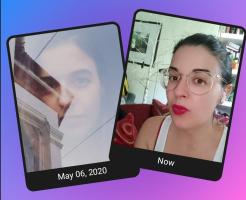Copy Link
Add to Bookmark
Report
Current Cities Volume 03 Number 04

_Current_Cites_
Volume 3, no. 4
April 1992
Library Technology Watch Program
University of California, Berkeley
Edited by David F.W. Robison
ISSN: 1060-2356
Contributors:
Teri Rinne, Vivienne Roumani, Lisa Rowlison, Mark Takaro, Roy Tennant
Electronic Publishing
de Klerk, Ann "Electronic Publishing and Networking '92" College & Research
Libraries News. 53(3) (March 1992):181-182. A brief article highlighting the
goings on at this first annual conference sponsored in part by Meckler
Publishing, Inc. Issues of copyright, marketing, and pricing were among the
topics addressed at the conference by such speakers as: Mitchell Kapor,
founder of the Electronic Frontier Foundation, Pat Morgan of the American
Academy for the Advancement of Science, and Karen Hunter of Elsevier. - LR
Dannelly, Gay N. "Publishing E-Journals: Publishing, Archiving, and Access"
posted on VPIEJ-L@VTVM1.BITNET (Thursday April 2, 1992). Dannelly, Chair of
the Collection Development Officers for the Committee for Institutional
Cooperation (CIC) announces a new and interesting project to establish a
cooperative e-journal archive based on the collections of CIC's members (The
Big Ten, the University of Chicago, Penn State and the University of Illinois,
Chicago). Dannelly will post updates to the list as the project progresses.
- LR
Bailey, Charles W., Jr. "Networked-based Electronic Serials" Information
Technology and Libraries 11(1) (March 1992):29-35. The revolution of
electronic publishing has created both opportunities and difficult questions
for librarians interested in providing access to electronic serials. Mr.
Bailey points out several problems of providing access to serial materials
which are available only via commercial electronic information systems (e.g.
preservation, cost, availability, etc.). While these problems are quite real,
the most significant opportunities in electronic publishing may very well
reside within the non-commercial international computer networks. And while
much of the information currently published on the net still mimics the
paper equivalent, he foresees a move toward complex multimedia information
systems, and hence different publishing "packages" than those currently used.
Mr. Bailey considers the question of whether electronic conferences could be
construed as serials. His conclusion is, appropriately, inconclusive, "Are they
serials? Quite possibly." [Quite possibly they are beasts of a new kind, not
yet defined nor treated by current cataloging standards. -lr] In considering
the future of electronic serials, Mr. Bailey identifies 12 pressing problems
which still need to be overcome (regarding storage, archiving, intellectual
property laws, indexing, etc.). The article ends with an stirring call to
action on the behalf of networked-based electronic serials. - LR
Expert Systems and Artificial Intelligence
Ridley, M.J. "An Expert System for Quality Control and Duplicate Detection in
Bibliographic Databases" Program: Automated Library and Information Systems
26(1) (Jan 1992):1-18. QUALCAT (Quality Control in Cataloging) is the name
given to a project at the University of Bradford which uses an expert system
to relieve the catalog of duplicate monographic records. First, records (in
UKMARC format) are transferred into a relational database and the records are
compared to determine whether there are duplicates (given the variation in
record quality and cataloging style, this is no trivial task); once duplicates
are identified the system tests for record quality and identifies (based on
defined criteria) the catalog's best record for the title. - LR
Hyper- and Multimedia
Electronics 65(3) (March 1992). A trio of articles from this business-
oriented journal address some of the obstacles that thwart the progress of
multimedia development:
o Curran, Lawrence "A Glut of Standards Slows Multimedia" pp. 34-35.
Curran presents the standards debate as another of multimedia's obstacles to
full consumer acceptance. Activities of the Interactive Multimedia
Association (IMA), the Multimedia PC Marketing Council and others seeking
cross-platform compatibility that could potentially simplify the proliferation
of industry standards in multimedia.
o Shandle, Jack "Chip Makers Take Aim at Multimedia Market" p. 36.
This article looks at developments in microprocessor functionality that
address multimedia applications.. By advancing multimedia hardware
development, vendors can cultivate the field for software developments
built on improved microprocessor capabilities.
o -- "Multimedia's New Motto: Partner to Profit" pp. 30-32. Shandle
reviews some of the new partnerships between multimedia vendors. The
Microsoft/Tandy Multimedia PC consortium faces the Kaleida alliance of IBM
and Apple in a battle for the buying public that could yield improved
multimedia consumer products. - MT
Ito, Russell "QuickTime in Action" MacUser 8(5) (May 1992):84- 92. Desktop
video and multimedia authoring are among the many contributions that
QuickTime makes to the Mac user. Carrying forward Apple's pilot/passenger
metaphor, the QuickTime capabilities for each are spelled out in detail with
future plans outlined for presently missing capabilities such as spreadsheet
integration. Equipment needs and limitations of the current release are also
described. - MT
Kawasaki, Guy "Let the QuickTimes Roll" MacUser 8(5) (May 1992): 25-26.
In a forthright critique of the fad of multimedia, Kawasaki raises important
concerns about why multimedia may be over-hyped. Rather than being seen
as a solution in search of a problem, multimedia must emerge as a tool that
can be used to address a variety of needs if it is to grow into its full
potential. Suggestions that could improve the viability of multimedia
deserve a closer look by vendors who hope to create lasting products. - MT
Luskin, Bernard J. "Designing Interactive Media: Sizzleware in CD-I" CD-ROM
Professional 5(2) (March 1992):93-95. Analysis of multimedia design
principles with reference to CD-I capabilities. User learning curves, issues
of cognitive science and hardware are briefly discussed. - MT
Yager, Tom "Practical Desktop Video" BYTE 17(4) (April 1992):106-114. The
first of a four-part series from the BYTE Multimedia Lab on how to put
multimedia to work, this article features a multi-platform evaluation of
desktop video production. The integration of video with text, graphics and
audio still relies on specialized hardware and software combinations, but
improvements in desktop video continue to fill in the huge gap between
broadcast quality video and home movies. A comparison weighing quality
and ease-of-use illustrates the area where future improvements will be
made in the field. - MT
Information Transfer
Casorso, Tracy "NCSU Transmission Project" posted on ILL-L@UVMVM.Bitnet
(6 April 1992). Casorso reports on an ongoing research and demonstration
initiative involving the NCSU Libraries and Computing Center and the
National Agricultural Library investigating the transmission of documents
across electronic networks directly to the researcher's computer. The
preliminary findings indicate that the technology is feasible but that "the
research library community is not as well prepared to investigate
networking issues as one might expect and that Internet reliability is
questionable." - VR
Lynch, Clifford A. "Text Encoding Initiative: Summary Progress Report" ASIS
Bulletin 18(3) (February/March 1992):21-22. As reflected by the title, this
is a summary progress report. The Text Encoding Initiative (TEI) will be
producing a revised copy of its "Guidelines for the Encoding and Interchange
of Machine Readable Texts." Lynch explains that these guidelines are
intended to suggest standards for entering texts into electronic form,
exchanging them, and sharing analyses of these texts. These guidelines are
intended for scholars in the humanities and social sciences. - VR
Stigleman, Sue "Bibliography Formatting Software: A Buying Guide" Database
15(1) (February 1992):15-27. Stigleman reviews various personal file
management software packages, including Pro-Cite, Artfile, Notebook. - VR
Networks and Networking
Cisler, Steve "Computers, Freedom, and Privacy-2: A Report" posted in 4
parts on PACS-L@UHUPVM1.Bitnet (April 7, 1992). This 17 page report
covers the goings-on at the 2nd annual conference sponsored by the
Association for Computing Machinery and 13 co-sponsors. Cisler describes
this as one of the best conferences he has ever attended, covering such
varied topics as, "Freedom in Cyberspace," "Ethics, Morality, and Criminality,"
"Electronic Money," "Free Speech and the Public Telephone Network." - DR
Coalition for Networked Information Spring 1992 Meeting of the Task Force:
Summary Report. Available in numerous formats (prepared by Joan
Lippincott) via anonymous ftp at ftp.cni.org in directory
/CNI/tf.meetings/1992a.spring. Find out what was covered at the most
recent CNI meeting. Topics included "Network Navigating and Navigators,"
"Networked Information Professionals," and "NREN Public Policy Framework."
- DR
Electronic Frontier Foundation "Report to the Net: The State of the EFF Open
Platform Initiative" EFFector ONline 2(6) (March 31, 1992):[3-7]. The EFF
reports on its progress in ensuring that the Net is open to all, closed to
none. The EFF proposes the speedy implementation of narrowband ISDN (a low-
cost digital network platform) "as the platform of choice to begin building a
National Public Information Network...." See the April 17th issue for a report
from EFF's ISDN Lab. - DR
Godwin, Mike "Reach Out and Tap Someone?: An Editorial" EFFector ONline
2(8) (April 17, 1992):[1-3]. Find out why the EFF, Computer Professionals for
Social Responsibility, the ACLU, IBM, and others are joining forces to stop the
FBI and the Department of Justice from gaining access to encryption keys
used for data security. - DR
Ladner, Sharyn J. and Hope N. Tillman "How Special Librarians Really Use the
Internet" posted in 3 parts on PACS-L@UHUPVM1.bitnet (April 1, 1992).
Ladner and Hope conducted a survey of librarians to find out how they use
the net, and how valuable they find it. The results of this study are
interesting, and not just for special librarians. This is the first study of
its kind that we've seen. - DR
Love, James P. "Owens Bill Fact Sheet" posted on PACS-L@UHUPVM1.bitnet
(April 17, 1992). Love, the director of the Taxpayer Assets Project, has
distributed the Project's Fact Sheet on HR 3459, RThe Improvement of
Information Access Act.S The bill mandates federal agencies to disseminate
federal information on the network in a standardized fashion. The fact sheet
provides some details of the bill, "What you can do," and information on two
related bills: GPO WINDO and the Freedom of Information Act II. - DR
Peters, Paul Evan "CNI _Call for Project Descriptions_" posted on PACS-
L@UHUPVM1.bitnet (March 31, 1992). Peters, the Director of the Coalition
for Networked Information, has issued a call for project descriptions to those
of us who are interested in working on the issue of "how networked
information resources and services are being used to improve teaching and
learning." If you are interested in this project, you can join the Coalition
in its work. - DR
"Questions and Answers with Jane Ryland and Peter Young" Information
Technology and Libraries 11(1) (March 1992):51-54. Jane Ryland, President
of CAUSE, and Peter Young, Executive Director of the US National Commision
on Libraries and Information Sciences, answer astute questions about the
role of libraries and education in the ongoing development of the NREN. - DR
Shandle, Jack "Can Data Superhighways put the U.S. in High Gear?" Electronics
65(2) (February 1992):40-42. Shandle provides some insight into how the
electronics/computer industry views the NREN, and which companies are
poised to jump in the fray. Included are two sidebars, "Processing is the
Bottleneck" and "Japan Lags, But Maybe Not for Long." - DR
Optical Disc Technologies
Au, Ka-Neng "Hardware Options: From LANs to WANs" CD-ROM Librarian
7(3) (March 1992):12-17. As the title suggests, this article reviews the
plethora of CD-ROM networking configurations currently available, each
suited to a particular environment. "The question today," writes Au,
"becomes 'What network?' rather than 'Why network?'" - TR
Berry, John "CD-ROM: The Medium of the Moment" Library Journal 117(2)
(February 1, 1992):45-47. This eye-opening survey conducted by Cahners
Research for LJ shows just how firmly CD-ROM technology has entrenched
itself in libraries of all types. CD-ROM databases have become more popular
than their online counterparts in the majority of the 608 libraries surveyed.
Public libraries projected the largest average expenditure on CD-ROM
software in fiscal year 1991-92 (Public: $13,533; Academic: $10,519; Special:
$8,162). - TR
LaGuardia, Cheryl and Chuck Huber "Digital Dreams: A CD-ROM Users' Wish
List" Library Journal 117(2) (February 1, 1992):40-43. After installing
nearly 80 CD-ROM databases running on 20 different software packages,
LaGuardia and Huber have compiled an intelligent and entertaining list of
pet-peeves and suggestions that CD-ROM vendors should heed. Their wish
list runs the gamut, including pricing, installation, interface, documentation
and support issues. -TR
O'Connor, Mary Ann "Emerging Standards for CD-ROM Development" CD-ROM
Professional 5(2) (March 1992):135-137. Citing the establishment of
standards as the single largest contributor to the success of CD-ROM
technology, O'Connor provides an overview of the status of current CD-ROM
standards discussions, proposals and activities. - TR
VonVille, Helena M. and Bruce A. Weaver "Downloading From CD-ROM: A
Preliminary Survey" CD-ROM Professional 5(2) (March 1992):48-49. This
article presents the results of an informal survey conducted by a task force
appointed by the Ohio State University Libraries regarding downloading data
from CD-ROM workstations. Although downloading is one avenue libraries
can explore in an effort to reduce the recurring costs of CD-ROM printing, few
of the libraries surveyed actively encourage or advertise its availability as
an option...yet. - TR
General Category
Postman, Neil. Technopoly: The Surrender of Culture to Technology. New
York: Knopf, 1992. While Postman takes shots at technology, he has not
written a diatribe against it. Taking a long view of technology and its
effects on culture through the ages though, the author argues that "the
accusation can be made that the uncontrolled growth of technology destroys
the vital sources of our humanity." - DR
Saunders, Laverna M. "The Virtual Library Today" Library Administration
& Management 6(2) (Spring 1992):66-70. This article looks at where the
library community stands in the realization of the virtual library. Ms.
Saunders identifies several projects which have furthered the community
toward the goal of a virtual library (e.g. project Ariel, which allows for
high quality images to be scanned and transmitted for document delivery; the
transparent gateway connections which many OPACs now provide, such as the
MELVYL system; access to full-text databases, etc.). She also describes
several pilot projects which are currently shaping the future of the
electronic library. She asks several important questions which will prove
crucial to the implementation of a virtual library: what mixture of paper
and electronic sources is appropriate? How do we ensure that information
stored electronically will be preserved? Furthermore, the need to train
naive users in the use of technology and about the available information
sources is identified. The article concludes with short descriptions of the
agenda for the Coalition for Networked Information and of the National
Research and Education Network. - LR
-------------------------------------------------------------------
Current Cites 3(4)(April 1992) ISSN: 1060-2356
Copyright (C) 1992 by the Library, University of
California, Berkeley. All rights reserved.
All product names are trademarks or registered trademarks of
their respective holders. Mention of a product in this publication
does not necessarily imply endorsement of the product.
Copying is permitted for noncommercial use by computerized
bulletin board/conference systems, individual scholars, and
libraries. Libraries are authorized to add the journal to their
collections at no cost. This message must appear on copied
material. All commercial use requires permission from the editor,
who may be reached in the following ways:
drobison@library.berkeley.edu // drobison@ucblibra // (510)642-7600
-------------------------------------------------------------------






















